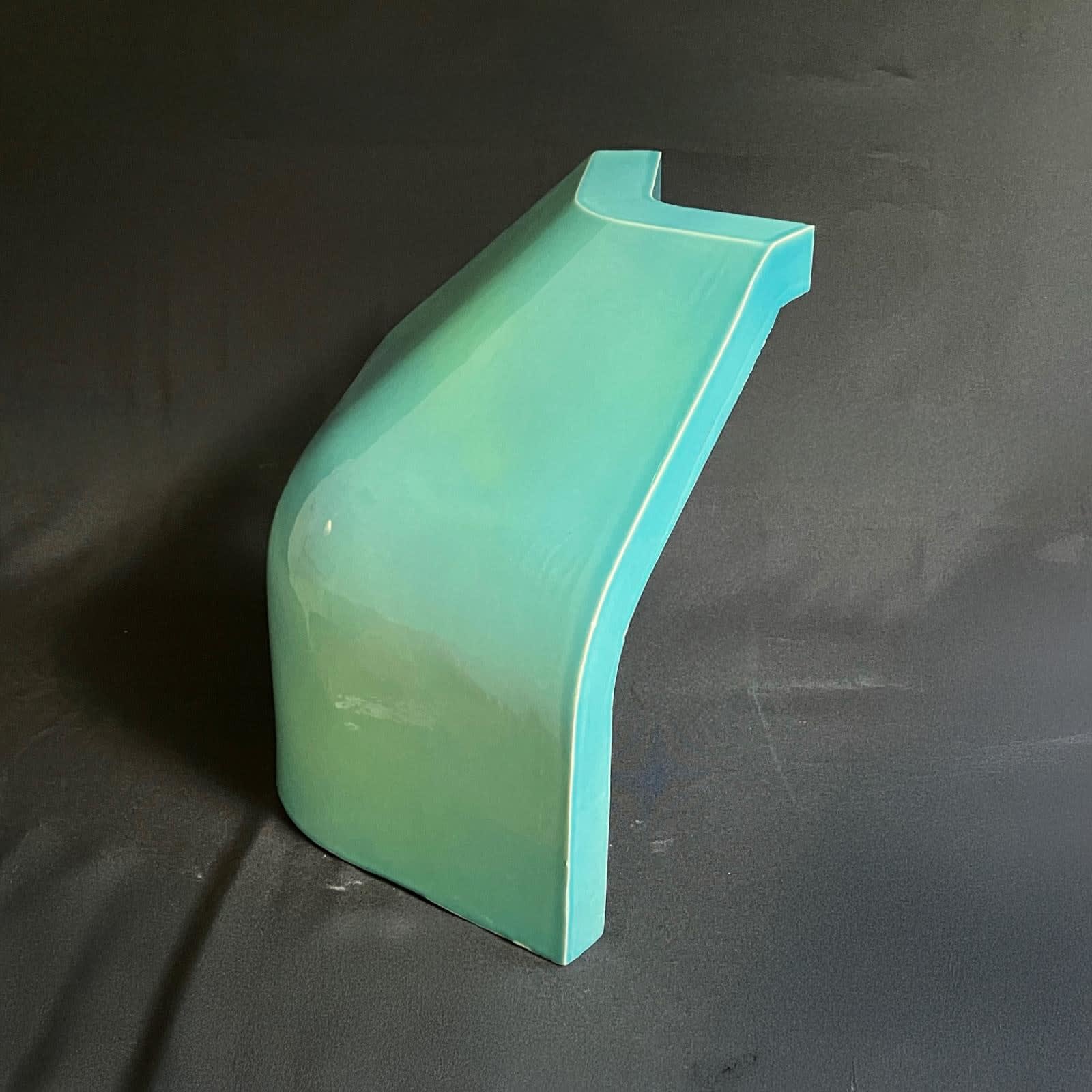-
Artworks
Page\Park Architects in collaboration with Helen Kellock and Darwen Terracotta
Ceramic cladding to Glencairn House, 2024Ceramic and digital printTile: 40 x 45 x 30 cm
Drawing: 70 x 50 cm wide£ 5,000.00Own Art
As low as 10 interest-free monthly payments of £250 and £2500.00 deposit.Further images
Constructed in 1623, Glencairn House is the oldest surviving building in Dumbarton and stands as a testament to the extraordinary history of the town. Page\Park were commissioned by West Dunbartonshire...Constructed in 1623, Glencairn House is the oldest surviving building in Dumbarton and stands as a testament to the extraordinary history of the town. Page\Park were commissioned by West Dunbartonshire Council to transform this Category B listed building into a new public lending library and local history museum for the town, due for completion in summer 2025. The architectural concept for the extension to Glencairn House and standalone children's library takes inspiration from the illustrious history of industry and manufacturing in Dumbarton. The oil painting titled 'Dumbarton in Glassmaking Days' by Alexander Brown (1792-1844), held in the WDC museum collection, is an extraordinary image of Dumbarton. Dominating the townscape on one side are the tall conical forms of the glasswork chimneys and on the other side the tall conical form of Dumbarton Rock. Both structures, manmade and natural, symbolise aspects of Dumbarton. The glassworks a symbol of industry and innovation, the Rock a symbol of power. Our proposal takes inspiration from these forms and looks to interpret this heritage, unique to Dumbarton, in the architectural language. The roofs of the new extension and children's library are tall conical forms reminiscent of the glassworks chimneys. From Riverside Lane, these two 'modern chimneys' will be seen in context with the Rock. These visual connections to Dumbarton Rock underpin the planning of the site, with the form of each building shaped to open up towards the Rock, linking these three structures together. The new build elements will be clad in bespoke ceramic cladding made by Darwen Terracotta in Blackburn. Initially we were inspired by the quality of the glass objects in the museum collection, as well as the landscape around Dumbarton.
To develop this idea, we worked with Glasgow based artist, Helen Kellock, to create a unique colour and texture to the ceramic glaze. It was important to us to capture the handmade quality of the historic glass objects as well as the intangible colour and tone of the landscape around the town. After several rounds of samples with Darwen Terracotta, we arrived at the final glaze where glints of lime green and turquoise shimmer subtly against aqua blue. As the daylight changes through the day, and year, the lighter tones will pick up and sing through. The contrast is strong enough to give a sense of movement. The overall effect is light, vivid and reflects both the museum's glass objects and the waters of the Leven. It is uniquely of Dumbarton. The external walls and roofs of the new extension and children's library are clad in ceramic tiles. The model submitted is a to-scale prototype of the corner eaves tile where the different geometries of the angled external walls and roof pitches come together in a soft curve, reminiscent of the handmade glass turtles in the museum collection.
Join our mailing list
Join our email list to be the first to hear about RSA exhibitions, events and opportunities.
* denotes required fields
We will process the personal data you have supplied in accordance with our privacy policy (available on request). You can unsubscribe or change your preferences at any time by clicking the link in our emails.








